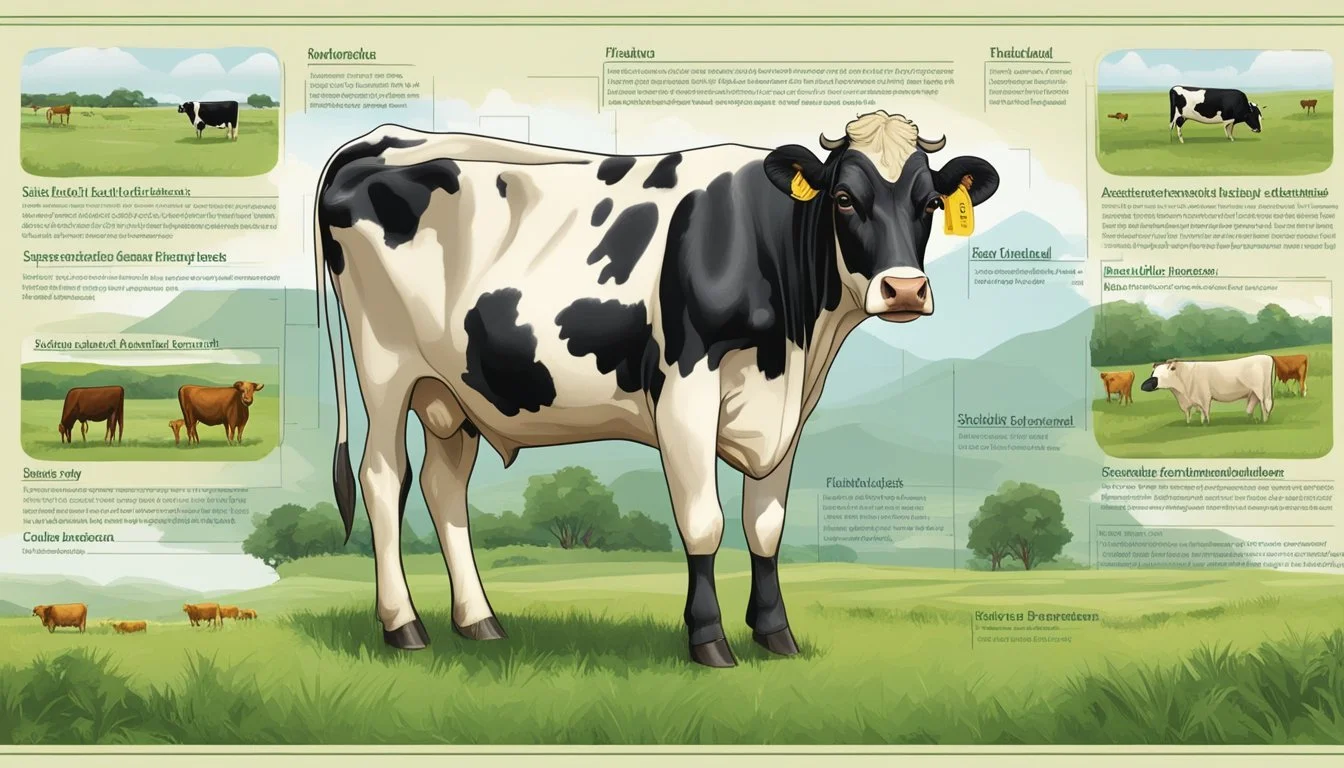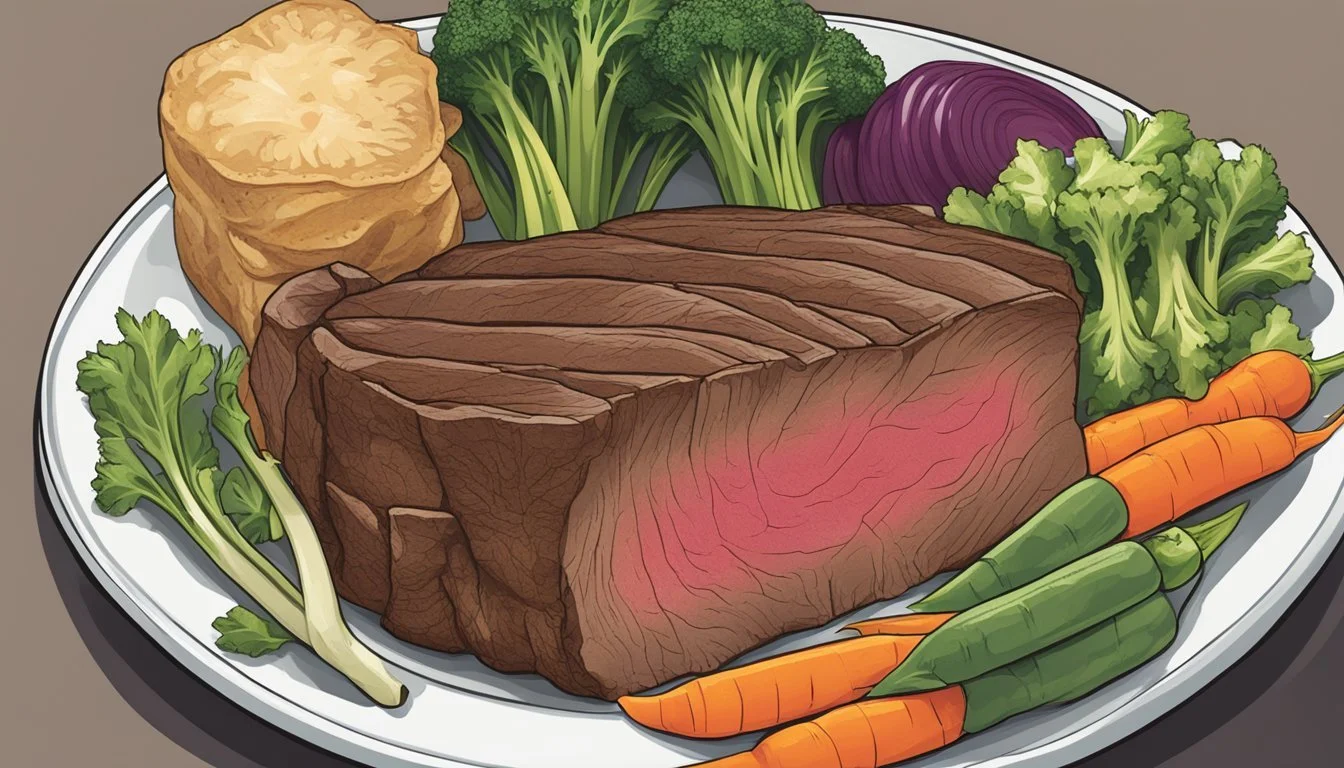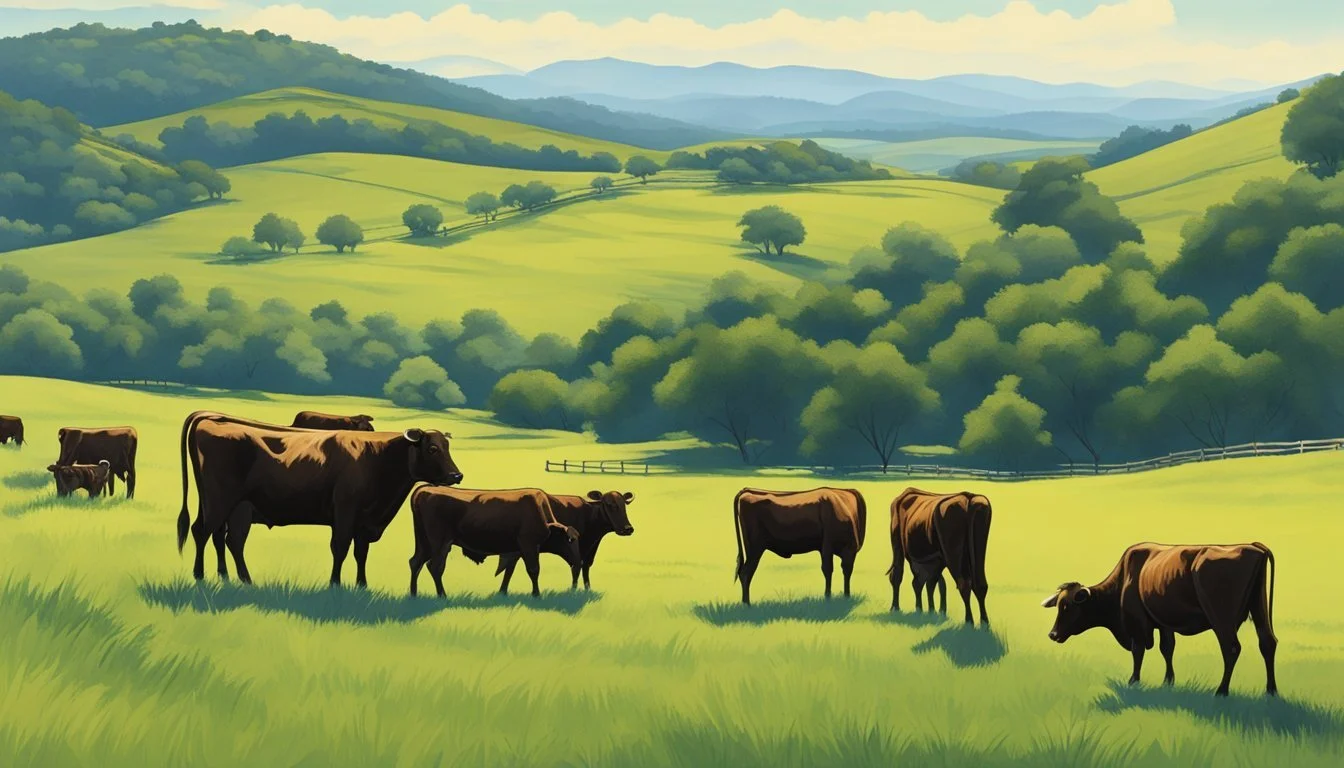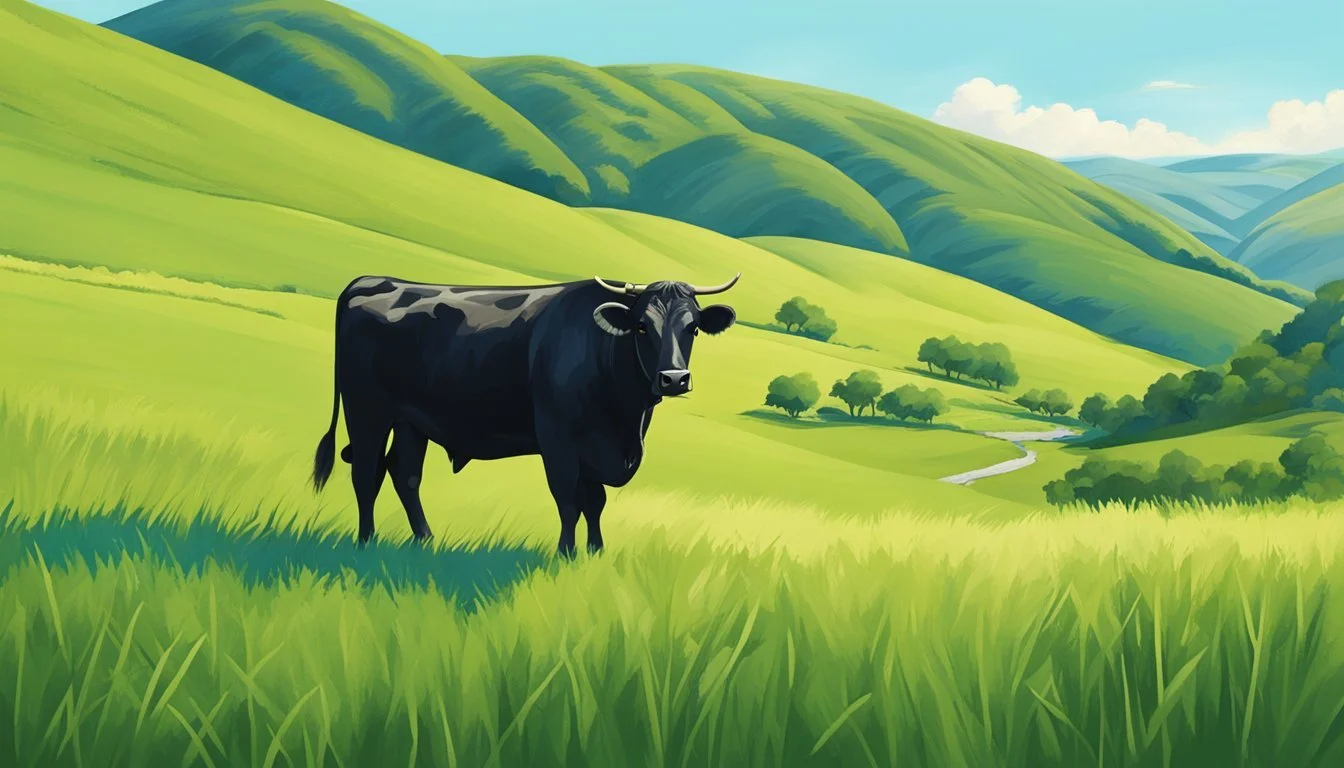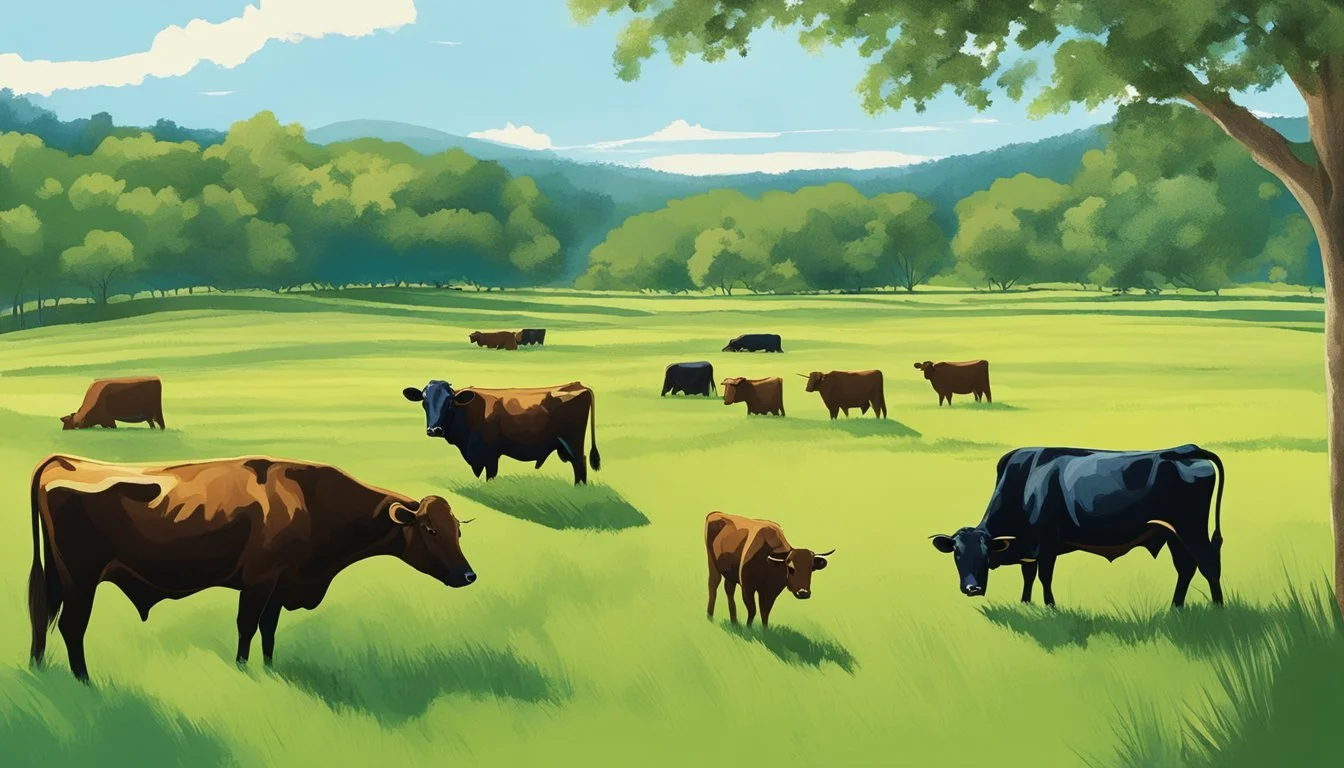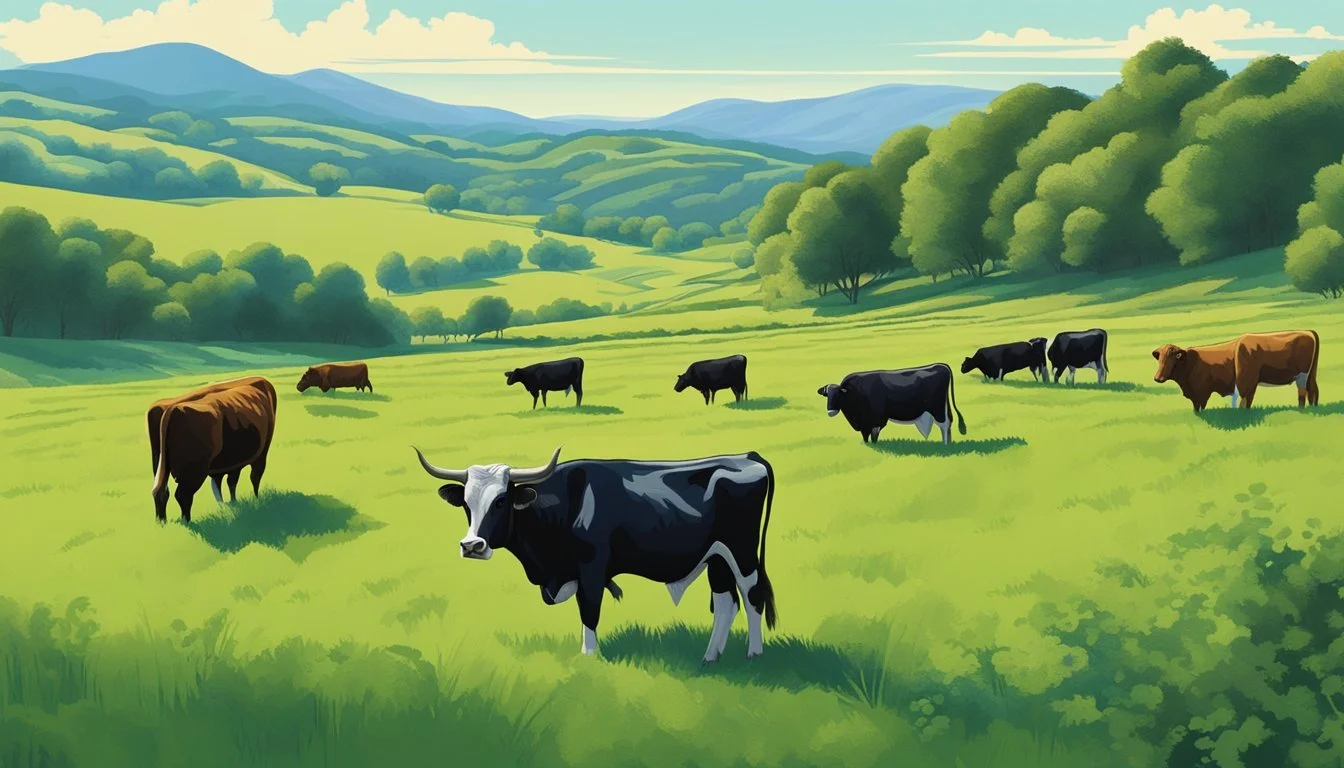The Nutritional Value of Dexter Cattle Beef
Evaluating Its Distinct Benefits Over Other Breeds
Dexter cattle, a breed native to Ireland, is distinguished by its smaller size and efficient grass-based diet. This breed is renowned for producing beef (What wine goes well with beef?) that is rich in nutritional value, including high levels of Omega 3 and Omega 6 fatty acids, and noted for good marbling which contributes to its tenderness and flavor. In comparing the nutritional content of Dexter cattle beef to other breeds, it is important to consider factors such as diet, genetics, and management practices, all of which play significant roles in influencing meat quality and composition.
The beef market offers a variety of options, with breeds such as Angus and Hereford known for their distinctive qualities. Angus cattle, originating from Scotland, are praised for their marbling and meat quality, while Herefords are appreciated for their adaptability and efficiency. Dexter beef stands out as an alternative for those seeking a unique combination of flavor and health benefits, often associated with its natural rearing methods and leaner physique. When evaluating the nutritional value of Dexter cattle beef, comparisons to these other breeds reveal differences in fat content, texture, and overall taste, influenced by breed-specific attributes and rearing conditions.
Nutritional value is a critical aspect for consumers, and the profile of beef from Dexter cattle aligns with a growing demand for healthier red meat options. Evaluating how Dexter beef stacks up against other breeds in terms of protein content, fat levels, and beneficial fatty acids is imperative for understanding its place in a balanced diet. The breed's ability to thrive outdoors on pasture without the need for supplemental grain feeding also impacts the nutritional profile of its beef, often leading to leaner cuts with potential health benefits. Through a careful analysis of these characteristics, the merits of including Dexter cattle beef in one's diet can be assessed in contrast to other popular beef breeds.
Background and Origins
The Dexter breed, known for its compact size and versatility, has a rich history and distinct breed characteristics that have enabled it to adapt to various climates.
History of Dexter Cattle
Dexter cattle trace their origins to the southern part of Ireland, where they were bred by small landholders. The breed was developed from the mountain cattle of the region and was formally recognized in the late 19th century. Its name is derived from a Mr. Dexter, an agent of Lord Hawarden, who is credited with improving the breed.
Breed Characteristics and Appearance
Physical Traits:
Height: 36-44 inches
Weight: Up to 750 pounds
Coat: Short, thick; black, red, or dun-colored
Horns: Short and moderately thick, emerging laterally
Dexters are known for their small stature, making them well-suited for smaller farms and for grazing in confined spaces.
Dexter Cattle in Different Climates
Dexter cattle exhibit a high level of hardiness, allowing them to thrive in various climates. Their origins in Ireland equipped them with the traits necessary to withstand cooler, wetter conditions. However, they have also adapted to warmer climates, maintaining productivity in both beef and dairy production across diverse environmental conditions.
Nutritional Profile of Dexter Beef
Dexter beef is known for being nutritionally rich with a distinct profile that includes beneficial fatty acids and high protein levels. It offers a unique balance of flavor and health benefits attributable to its marbling and the cattle's natural diet.
Fat Content and Fatty Acids
Dexter beef typically contains a moderate level of fat content, contributing to its tenderness and flavor. The specific composition of the fat in Dexter beef has notable benefits:
Omega-3 and Omega-6 Fatty Acids: These are present in higher concentrations when compared to some larger breeds, primarily due to the grass-fed nature of Dexter cattle.
Saturated Fat: Dexter beef has a relatively lower percentage of saturated fat, which can be advantageous from a health perspective.
Protein Levels and Marbling
The protein levels in Dexter beef are robust, providing an essential nutrient that is vital for muscle growth and repair:
Protein Content: Dexter beef is a rich source of high-quality protein, essential for a balanced diet.
Marbling: Dexter beef is characterized by good marbling, which is the intramuscular fat that contributes to both the flavor profile and the tenderness of the beef. Despite its smaller size, Dexter cattle develop marbling that compares favorably to larger beef breeds.
Breeding and Production
Dexter cattle are renowned for their high-quality beef and efficient milk production. In the context of the beef industry, their relatively small size and adaptability have significant implications on breeding strategies and the output of both meat and milk.
Breeding Techniques
Dexter cattle, originating from southern Ireland in the early 1800s, have been bred for their hardiness and dual-purpose capabilities. The breed demonstrates a combination of traits that include a smaller stature and a friendly disposition, which make them well-suited for small-scale farming operations. Breeders often employ selective breeding to maintain these desirable characteristics. They may also practice crossbreeding, mixing with other breeds to enhance certain traits like hardiness or meat quality.
The production of Dexter cattle is managed to capitalize on their natural tendencies for efficient reproduction and mothering abilities. Breeding practices ensure that traits like early maturity, longevity, and calving ease are preserved and enhanced over generations.
Meat and Milk Production
Meat Production: Dexter cattle are celebrated for the exceptional quality of their beef, which is typically well-marbled and tender. Their meat is known to be lean yet flavorful, a characteristic that is highly sought after in the beef industry. The breed is often raised for meat production, where their manageable size allows for easier handling and cost-effectiveness.
Milk Production: Alongside their meat, Dexter cattle are also valued for their milk, which is rich in butterfat and suitable for cheese-making. Their milk yield, while lower in volume compared to larger dairy breeds, is high in quality, making it a desirable product for dairy producers focused on niche markets or artisan cheese production.
The breeding and production of Dexter cattle reflect their position as a multi-purpose breed capable of providing both high-quality beef and rich milk, appealing to diverse markets and farm sizes.
Raising Dexter Cattle
Raising Dexter cattle offers farmers a robust and efficient breed well-suited for small-scale farming and homesteading. Their care involves specific feeding and grazing patterns and they exhibit remarkable adaptability, particularly beneficial for small farms.
Feeding and Grazing Patterns
Dexter cattle are renowned for their ability to thrive on pasture-based diets, which makes them particularly appealing to farmers focused on grazing management. They efficiently convert forage into muscle, requiring less grain supplementation than many other breeds. Their dietary flexibility allows them to maintain good body condition even in varied climates and pasture conditions.
Grain Supplementation: Optional, depending on the farm's resources and desired beef quality.
Pasture: Preferred primary diet, supporting a more natural lifestyle and potentially reducing feed costs.
Adaptability to Small Farms
Small Farm Compatibility: Dexter cattle are an ideal fit for small farms due to their smaller size and hardiness. They require less space and can be more manageable for farmers with limited acreage.
Space Efficiency: Dexters utilize pasture more effectively, offering more pounds of beef per acre compared to larger breeds.
Handling: Their docile nature and smaller stature simplify routine handling tasks such as vaccination and weaning, which are crucial for small operations with fewer hands on deck.
Dexter cattle present a viable and sustainable option for small-scale farmers and homesteaders, accommodating to a simpler and more efficient farming approach.
Benefits and Challenges
In analyzing the nutritional value of Dexter cattle beef, it's important to assess the breed's environmental impact and commercial viability. These factors provide insight into both the benefits and the challenges of raising Dexter cattle for beef production.
Environmental Impact
Dexter cattle, known for their small size, offer significant benefits for small landholders looking to raise beef with a lower environmental footprint. Their size allows them to require less pasture and to be more efficient in foraging diverse landscapes, compared to larger breeds. This efficiency can mitigate overgrazing concerns and foster greater land resilience.
Efficiency: High forage conversion into meat
Resilience: Suited for variable climates and less fertile landscapes
However, their small stature might limit the total volume of beef produced per animal, potentially impacting the overall meat yield from a given pasture. As dual-purpose breeds, managing Dexter cattle for both dairy and meat production can be challenging, as farmers must balance these interrelated purposes to optimize overall output.
Commercial Viability
Dexter cattle present a dual advantage for commercial viability: they are a dual-purpose breed, providing both milk and beef, and their meat is known for its quality – renowned for its tenderness and rich flavor. For small landholders, Dexter cattle can be a practical choice, yielding more meat proportional to their size:
Benefits: Tender meat with higher protein content; suitable for small-scale farming
Dual-Purpose Breed: Offers versatile use for beef and milk production
The challenges for commercial viability include smaller individual carcass weights, which may not meet the volume demands of traditional beef markets. Additionally, small breed specialty markets must be cultivated by farmers to ensure successful sales and profitability. Small breed challenges are balanced by higher meat conversion rates and suitability for niche markets that value quality over quantity.
Comparison with Other Breeds
When assessing the nutritional value of Dexter cattle beef, a comparison with other breeds such as Angus, Highland, and Shorthorn reveals differences in quality and meat characteristics.
Traits Comparison
Dexter cattle are known for their small stature, being roughly two-thirds the size of a Hereford. These Irish natives are recognized for their hardiness and easy management. In contrast, Angus cattle, originating from Scotland, are renowned for their carcass traits and meat quality. Notably, Angus beef is often sought after for its marbling, which can enhance both flavor and texture. Highland cattle, another Scottish breed, are celebrated for their lean meat, while Shorthorn cattle offer a balance, with good marbling and efficient feed conversion rates.
Dexter: Hardy, smaller size, easy to manage.
Angus: Excellent marbling, good carcass traits.
Highland: Lean meat, suited for challenging climates.
Shorthorn: Good marbling, efficient feed conversion.
Carcass and Meat Quality Comparison
The carcass and meat quality of Dexter cattle have distinctive characteristics. They typically exhibit a natural tenderness and are often high in Omega 3 and 6 fatty acids, which may contribute to their nutritional profile. Marbling is a noted quality of Dexter beef, although it may not be as prevalent as in Angus beef. Angus cattle, with their prevalent marbling, are recognized for a texture that is both tender and flavorful.
In terms of carcass traits, Angus and Shorthorn breeds tend to produce larger carcasses compared to Dexters, yielding more meat per animal. However, Dexters can thrive well on grass and do not require indoor housing during winter, potentially lowering their environmental footprint and management costs.
Breed: Dexter, Marbling: Good, Texture: Tender, Omega Fatty Acids: High, Management: Easy, low-cost, Carcass Size: Small
Breed: Angus, Marbling: Excellent, Texture: Tender, Omega Fatty Acids: Varied, Management: Intensive, Carcass Size: Large
Breed: Highland, Marbling: Low, Texture: Lean, Omega Fatty Acids: Varied, Management: Adaptable, Carcass Size: Moderate to Large
Breed: Shorthorn, Marbling: Good, Texture: Balanced, Omega Fatty Acids: Varied, Management: Efficient, Carcass Size: Large
It is evident that while Dexter beef may offer a unique set of qualities, other breeds provide a range of benefits that can cater to different consumer preferences and requirements. The selection of beef breed for nutritional purposes should thus consider these variances in meat and carcass quality attributes.
Consumer Considerations
When choosing beef, consumers often weigh taste preferences against health and dietary needs. Dexter cattle beef is distinctive for its flavor and health benefits compared to larger breeds.
Taste and Culinary Uses
Dexter beef is known for its strong beef flavor which can be attributed to the high levels of Omega 3 and 6 fatty acids, as well as good marbling within the meat. This marbling ensures that the meat remains tender and juicy when cooked, and it imparts a rich, full-bodied taste. Cuts of meat from Dexters, due to their smaller size, may be smaller than typical beef cuts, but they are well-suited for a range of culinary applications, from roasts to steaks.
Health and Dietary Concerns
Aside from flavor, health-conscious consumers consider Dexter beef an advantageous option. The breed is noted for being high in Omega 3 and Omega 6, which are fatty acids known for their health benefits, including heart health. Furthermore, the natural tendency for Dexter cattle to be grass-fed may lead to leaner meat with potential health benefits. However, as with any red meat, consumers are advised to consider portion sizes and frequency of consumption within the context of a balanced diet.
Economic Aspects
Dexter cattle beef is making a mark in specialized segments of the beef market, where unique characteristics such as smaller cuts resonate with a specific consumer base. This segment's market demand and sustainability for farmers are critical economic aspects to consider when assessing the breed's potential for profitability.
Market Demand and Pricing
Market demand for Dexter cattle beef is influenced by its distinct quality and smaller portion sizes, appealing to niche markets and consumers inclined towards local, sustainably sourced meat. Pricing reflects the breed's specialty status and can be higher compared to commercial breeds due to limited supply and increased production costs. Dexter beef often commands a premium in the market, dictated by:
Quality: Tenderness and flavor profile
Exclusivity: Limited availability and specialty product status
Consumer Preference: Growing trend for locally sourced and novel food experiences
Sustainability for Farmers
The sustainability of Dexter cattle for farmers hinges on several factors, including the breed's adaptability and efficient feed conversion which can lead to improved yield. While initial investments may be substantial, sustainability benefits emerge through:
Reduced Inputs: Their smaller size requires less feed and space, reducing overhead costs.
Grass-fed Potential: Dexters are well-suited to pasture-based farming, which can lower production costs and cater to market trends favoring grass-fed beef.
Productivity: Despite their size, Dexters have a reputation for high fertility and longevity, contributing to economic sustainability for farmers.
Overall, Dexter cattle offer a promising proposition for farmers targeting specialty markets that seek out the unique qualities of the beef they produce.
Future Outlook
The value of Dexter cattle in both genetic diversity and sustainable agriculture is gaining recognition. As the agricultural sector moves forward, these aspects will likely guide research and farming practices.
Genetic Preservation Efforts
Efforts to preserve the genetic integrity of Dexter cattle are becoming a priority, as they represent a rare breed with historical significance. Organizations are focusing on maintaining purebred populations, ensuring a diverse genetic pool, and safeguarding against inbreeding. Genetic repositories and breeding programs are being put in place to stabilize their numbers and conserve their unique traits for future generations.
Role in Sustainable Agriculture
Dexter cattle play a key role in the paradigm shift towards sustainable agriculture due to their adaptability and efficiency. They thrive on less intensive feeding regimes and convert feed to meat more effectively than some larger breeds. Their smaller stature means they are less destructive to pasturelands, which is crucial for soil conservation. As a hardy breed, they are well-suited to organic and low-input farming systems, aligning with future sustainability goals.

